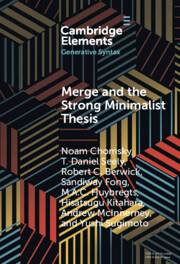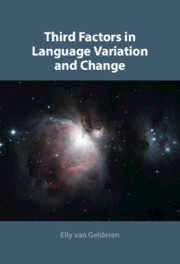Refine search
Actions for selected content:
5 results
6 - Some Concluding Remarks on Parameterization
-
- Book:
- The Parameter in Generative Grammar
- Published online:
- 17 April 2025
- Print publication:
- 24 April 2025, pp 314-318
-
- Chapter
- Export citation
3 - The Development of the Concept of Parameter in Minimalism
-
- Book:
- The Parameter in Generative Grammar
- Published online:
- 17 April 2025
- Print publication:
- 24 April 2025, pp 152-202
-
- Chapter
- Export citation

Merge and the Strong Minimalist Thesis
-
- Published online:
- 17 November 2023
- Print publication:
- 14 December 2023
-
- Element
- Export citation

Third Factors in Language Variation and Change
-
- Published online:
- 16 December 2021
- Print publication:
- 16 December 2021
1 - The Shift towards a Minimal UG
-
- Book:
- Third Factors in Language Variation and Change
- Published online:
- 16 December 2021
- Print publication:
- 16 December 2021, pp 1-28
-
- Chapter
- Export citation
